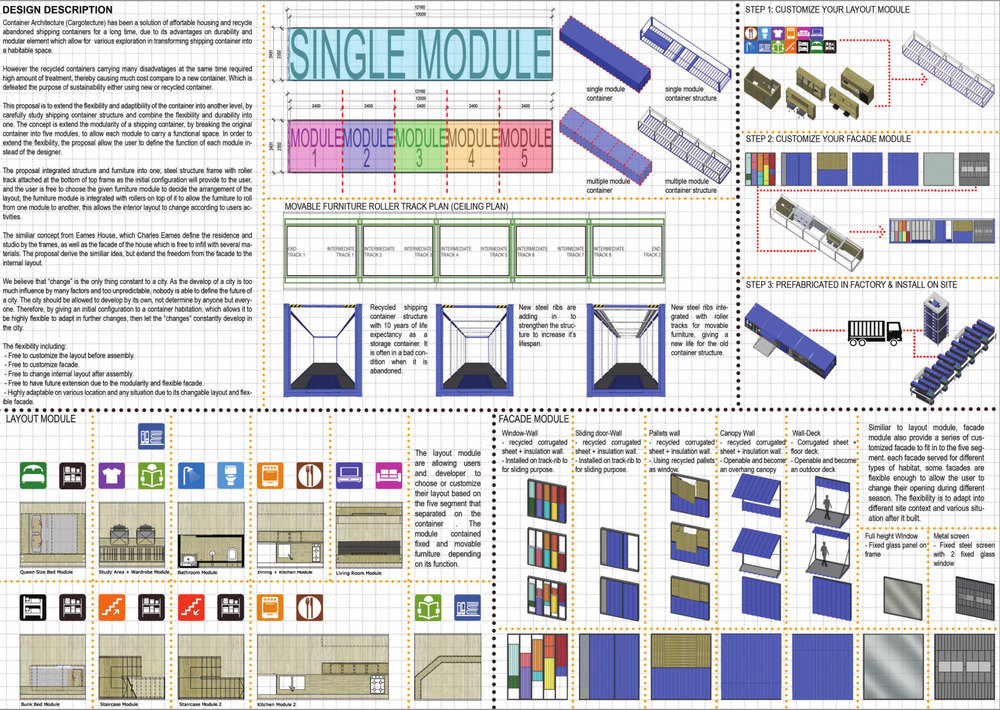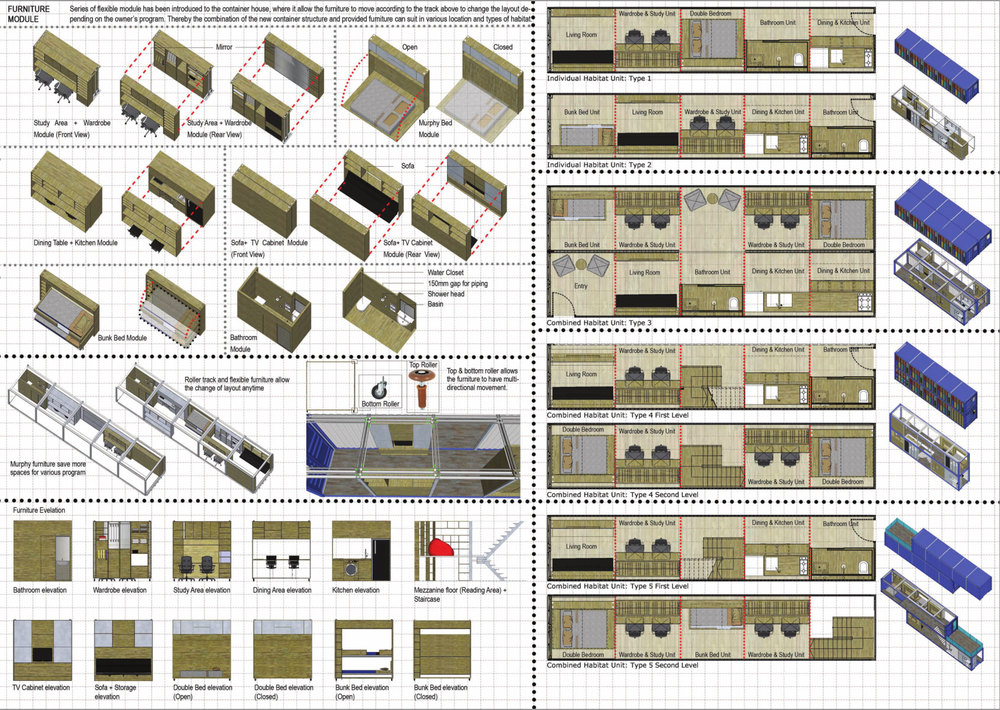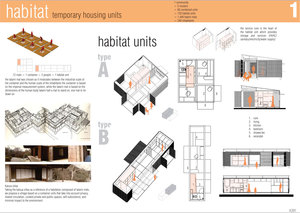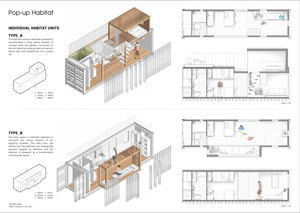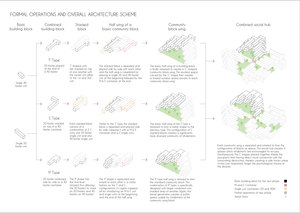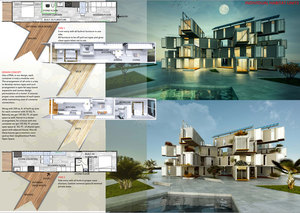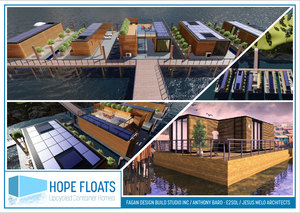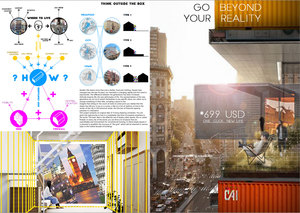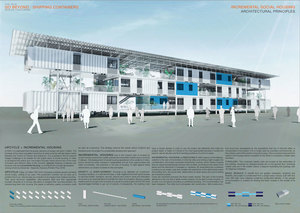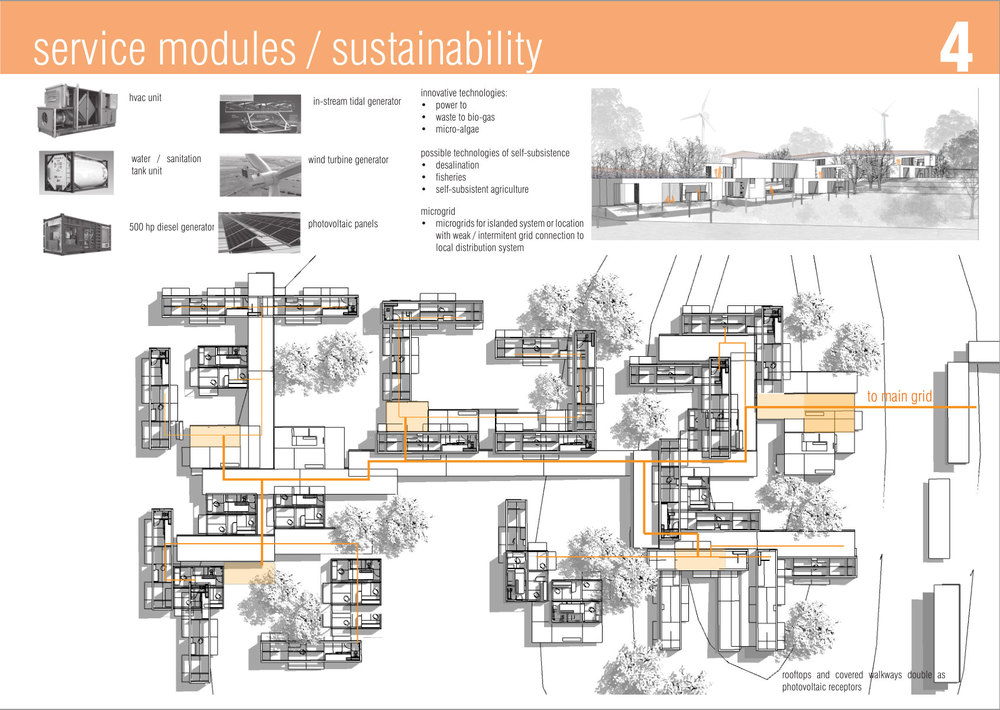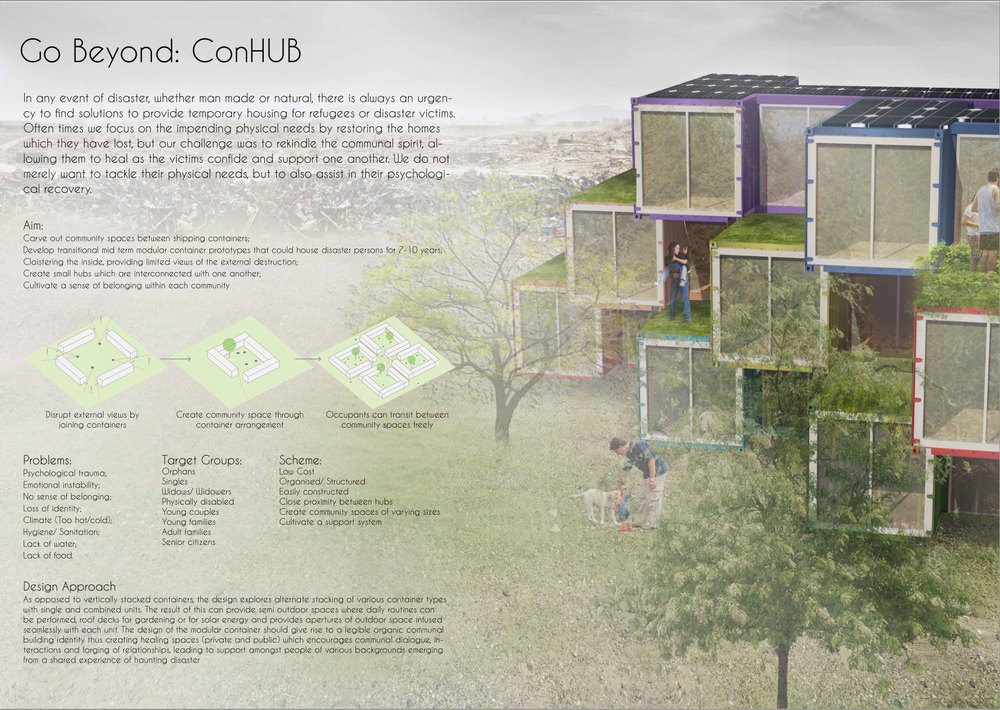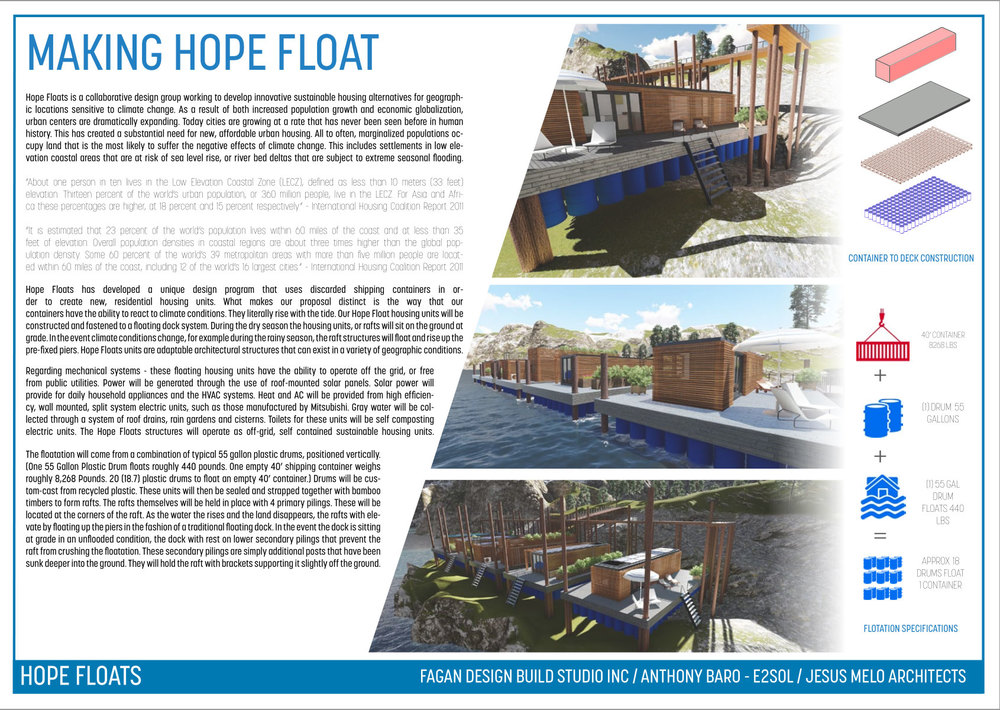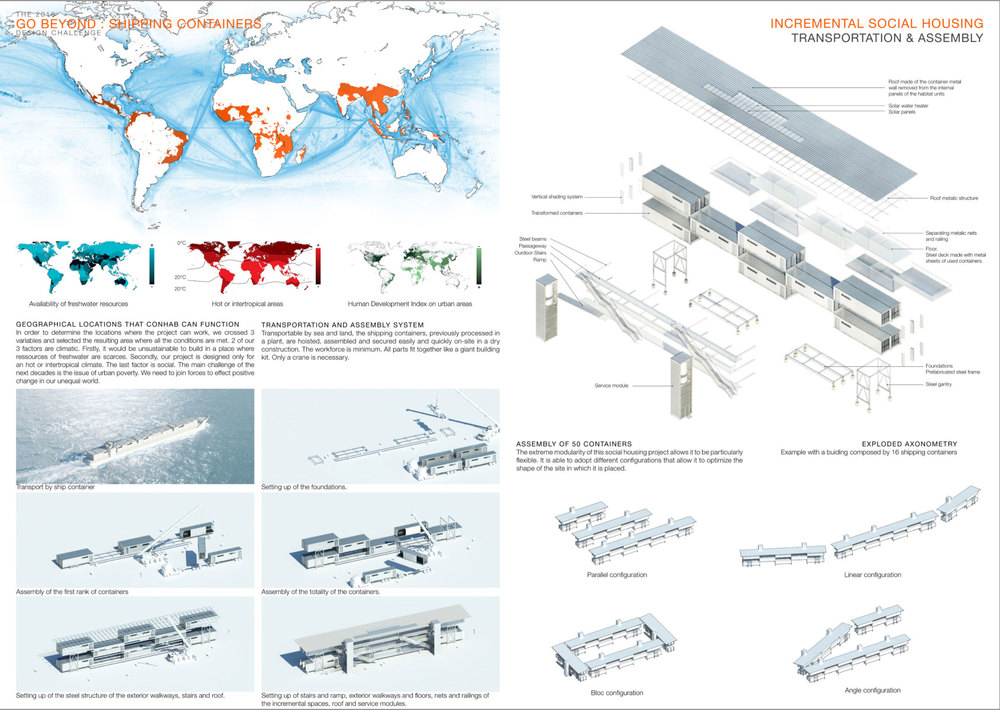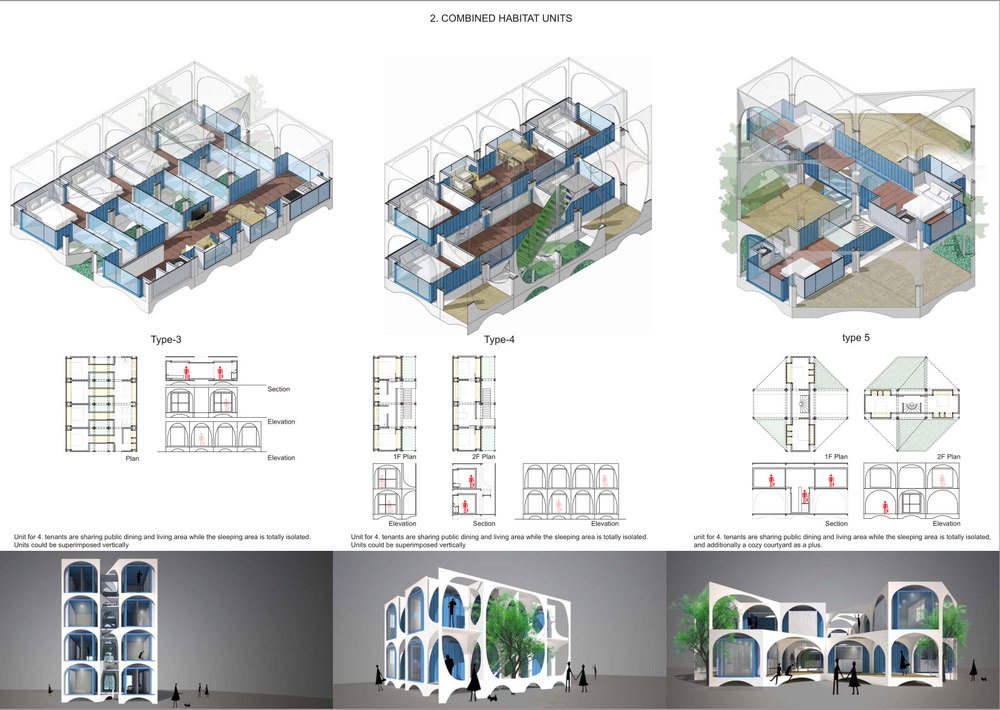Thank you for participating
O2 Design Atelier Sdn. Bhd
Container Architecture
With a heavy emphasis on customisability, coupled with practicality and innovation, O2 Design Atelier Sdn. Bhd. is the GO BEYOND: DESIGN CHALLENGE 2016 Stage 1 winner!
The team's innovation in modularity was outstanding as they explored the various methods of extending the usage of the shipping container. Their emphasis on customisability applies to various facets of the container: the layout and facade can be tailored to suit the needs of the user.
Congratulations to the team!
Other Entries
Drag the project listing bar to view more entries.
A391
Habitat
Taking the katsua villas as a reference of a habitation composed of tatami mats, the proposal of a village based on a container unit takes into account advantages such as privacy while minimising the impact on the environment.
CoE
Pop-up Habitat
The proposed project combines the efficiency of the kit-of-parts approach with the flexibility of the pop-out concept to create a unique and playful modular habitat.
CZARL ARCHITECTS
ConHub
The project focused on rekindling the communal spirit, along with providing for the physical needs of the inhabitants, in the recovery of disaster-affected communities.
GA Design Consultants
Individual Habitat Units
The arrangement of the shipping containers is the key in the proposal so as to allow for easy future expansion while catering for different design permutations of the cluster.
HOPE FLOATS
Upcycled Container Homes
The design proposal from HOPE FLOATS centers on tackling the problem of climate change - specifically, the issue of seasonal flooding as a result of rising sea levels. Their solution would be able to react accordingly to changes in the climatic conditions.
maika_team
One Click New Life
The team presents an interesting proposal of utilising unused spaces in the city. It turns these spaces which are unprofitable and inconvenient into comfortable living spaces.
-
-
-
SuperTropic
Incremental Social Housing
The team aims to tackle the issue of social housing. The project focuses mainly around two of the most innovative and efficient ideas of the moment – Upcycling and Incremental Housing.
United Unit
Habitat Units
The team challenges the notion that shipping containers are highly industrialised/standardized products which might prove difficult for its utilisers to deviate from its original purpose of transportation. The Frame and Add-on Systems are explored in their design proposals.
